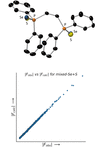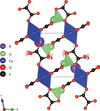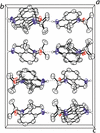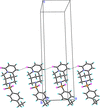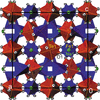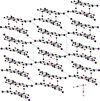issue contents
April 2023 issue

Cover illustration: 2,1-Benzothiazine 2,2-dioxide derivatives belong to an important class of heterocyclic compounds that have been widely investigated in medicinal chemistry research, possessing potential antimicrobial, analgesic and anti-inflammatory activity. They are also versatile synthetic intermediates, which can lead to the formation of stable ammonium enolates when reacting with aldehydes in the presence of secondary or tertiary amines. The present paper describes how a trimethylammonium salt based on 1-ethyl-2,1-benzothiazin-4(3H)-one 2,2-dioxide and benzaldehyde, 3,3′-(phenylmethylene)bis(1-ethyl-3,4-dihydro-1H-2,1-benzothiazine-2,2,4-trione), underwent hydrolysis and tautomeric interconversion when exposed to tosylic acid. The crystal structure of one of the tautomers was elucidated, while computational analysis was used to estimate the relative energies of the possible tautomeric forms. See: Shyshkina, Lega, Shemchuk, Starchikova & Shemchuk [Acta Cryst. (2023). E78, 349–355].
modern approaches and tools for teaching crystallography


research communications





























































 journal menu
journal menu











